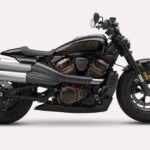Domino’s is the biggest pizza chain in the world, but its business plan isn’t what you might think. In fact, Domino’s makes over $2.7 billion in supply chain revenue, which is a huge 60% of its total income.
There are 20,000 locations, but the company only owns 1% of them. This means that straight pizza sales are less than $400 million. The way Domino’s gets money is by selling food to its thousands of franchised stores.
How does Domino’s unusual business plan work? Read on to find out why it might be good for shareholders.
Domino’s: A Supply Chain Company Disguised as a Pizza Company
When you think of the world’s biggest pizza chain, you probably imagine billions in pizza sales. Surprisingly, direct pizza revenue makes up only a slice of Domino’s total revenue pie:
- Supply Chain Revenue (Last 12 Months): $2.7 billion – From supplying franchised stores with ingredients, equipment, and operational support
- Pizza Revenue (Last 12 Months): Less than $400 million – From the 199 Domino’s-owned stores selling directly to customers
This breakdown seems absurd for a company with over 20,000 locations globally. So how does it make sense?
The Genius of Domino’s Franchise Model
Domino’s owns just 1% of its 20,000 stores. The remaining 99% are owned by independent franchisees. These franchisees have the option to source their own supplies. But Domino’s has strategically positioned itself as the supplier of choice through its scaled supply chain operation.
Supply Chain Operation
Domino’s supply chain includes:
- Fleet of 1,000+ delivery trucks – For distributing ingredients, supplies, and equipment
- Dozens of dough production facilities – For supplying consistent, high-quality dough
By producing essential ingredients and materials at scale, Domino’s can offer lower prices to franchisees. It also ensures consistency and quality control across all stores.
Profit-Sharing With Franchisees
Here’s the genius part – Domino’s shares supply chain profits with franchisees, generally returning 50% of pre-tax profits. This incentive convinces over 7,200 franchisees to use Domino’s supply chain in the U.S. and Canada.
Why Domino’s Prioritizes Its Supply Chain
Building a competitive advantage in the restaurant industry is challenging. Supply chain scale gives Domino’s leverage in two key areas:
1. Price
Producing ingredients and supplies centrally allows Domino’s to compete aggressively on price versus independent pizza shops. This makes the franchise opportunity more appealing.
2. Support for Franchisees
Prospective franchisees know Domino’s has secure supply channels and consistent products. The company also provides equipment, distribution, and operational support. This complete package attracts franchisees and helps fuel rapid unit growth.
Growth Strategy Focused on Franchised Stores
In 2022, 99% of franchisees renewed their contracts – stellar retention thanks to a mutually beneficial model. With strong franchisee relationships, Domino’s plans to open over 1,100 new units annually through 2028.
More franchised locations means more high-margin supply chain revenue. It also leads to more franchise fee and royalty income, which is nearly 100% profit for Domino’s.
Strong Shareholder Returns Supported by Supply Chain Focus
Domino’s supply-driven strategy may seem unorthodox for a pizza company. But it allows for an exceptional franchisee value proposition and efficient systemwide scale.
As franchised unit counts continue growing over 8% annually, management expects total company operating income to increase at a similar pace through 2028. Share repurchases, dividends, and operating leverage should drive around 50% total return for shareholders over the next four years.
The next time you grab a hot Domino’s pizza, remember the business delivering all that deliciousness is more supply chain management company than pizza purveyor. This distinctive strategy has fueled Domino’s into the globe’s largest pizza chain – and should continue rewarding shareholders for years to come.










